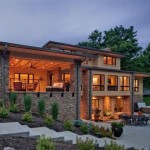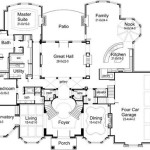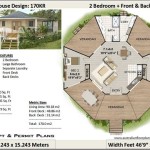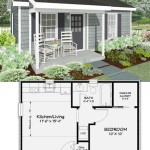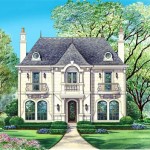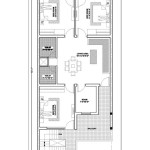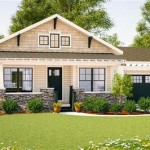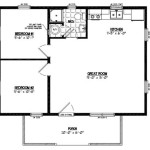Pool House Plans With Barn Inspiration: Bridging Recreation and Rustic Charm
The convergence of a pool house and barn architecture represents a unique design opportunity. It allows for the creation of a space that seamlessly integrates recreational amenities with the rustic aesthetics of a traditional barn structure. This combination offers a multi-functional area suitable for relaxation, entertainment, and storage, all within a visually appealing and structurally sound framework.
Pool house plans incorporating barn features often prioritize spaciousness, natural light, and durable materials. The design process can involve adapting existing barn structures or constructing new buildings that emulate barn-like characteristics. The overarching goal remains to create a harmonious blend of functionality and aesthetics, enhancing the overall appeal and usability of the property.
Understanding the Core Elements of Barn Architecture
Barn architecture is characterized by several distinct elements that contribute to its recognizable aesthetic. These elements are often incorporated into pool house designs to achieve the desired barn-inspired look. One primary element is the use of post-and-beam construction. This structural system utilizes heavy timbers to create a strong and open framework, allowing for large, unobstructed interior spaces. In the context of a pool house, this allows for ample room for lounging areas, changing rooms, and even small kitchenettes.
Another common element of barn architecture is the gabled roof. This roof style features two sloping sides that meet at a ridge, creating a simple yet effective design for shedding water and snow. In pool house designs, the gabled roof can be enhanced with dormers or cupolas to add visual interest and increase natural light penetration. Furthermore, the roof's pitch can be adjusted to accommodate solar panels, contributing to energy efficiency.
Exterior cladding is another key aspect of barn design. Traditional barns often utilize wood siding, such as board and batten or shiplap, to create a rustic and durable exterior. This type of siding can be replicated in pool house designs, providing a visually appealing and weather-resistant surface. Alternative materials, such as metal siding or stone accents, can also be incorporated to add texture and visual contrast.
Large barn doors are a defining feature of barn architecture. While not always practical for pool house applications, the concept of large openings can be adapted to create seamless indoor-outdoor transitions. This can be achieved through the use of oversized sliding glass doors or bi-fold doors that open up to the pool area. These features allow for easy access and create a sense of connection between the interior and exterior spaces.
Integrating Pool House Functionality into Barn Designs
Successfully integrating pool house functionality into a barn-inspired design requires careful consideration of the specific needs and preferences of the homeowner. This involves determining the desired amenities, such as changing rooms, restrooms, kitchenettes, and lounging areas, and arranging them within the available space. A well-designed layout will maximize efficiency and ensure that the pool house serves its intended purpose.
Changing rooms are an essential component of most pool houses. These spaces should be designed to provide privacy and convenience for swimmers. They can be equipped with benches, coat hooks, and storage shelves to accommodate towels, swimsuits, and other personal items. The size and number of changing rooms will depend on the anticipated usage of the pool.
Restrooms are another important consideration. A well-appointed restroom will include a toilet, sink, and shower. The shower can be particularly useful for rinsing off after swimming, preventing chlorine and other chemicals from being tracked into the main house. The design of the restroom should be consistent with the overall aesthetic of the pool house, using materials and finishes that complement the barn-inspired theme.
A kitchenette can be a valuable addition to a pool house, providing a convenient space for preparing snacks and drinks. A basic kitchenette may include a sink, refrigerator, and microwave. More elaborate setups may include a cooktop, oven, and dishwasher. The size and configuration of the kitchenette will depend on the homeowner's cooking habits and entertainment needs.
Lounging areas are crucial for creating a relaxing and inviting atmosphere in the pool house. These areas can be furnished with comfortable seating, such as sofas, armchairs, and chaise lounges. The layout should be designed to encourage conversation and relaxation. A fireplace or fire pit can be added to create a cozy ambiance, especially during cooler evenings.
Storage space is often overlooked in pool house designs, but it is essential for keeping the area organized and clutter-free. Storage can be incorporated in the form of cabinets, shelves, and closets. These storage solutions can be used to store pool equipment, toys, towels, and other items.
Material Selection and Design Considerations
The choice of materials plays a significant role in achieving the desired barn-inspired aesthetic and ensuring the durability and longevity of the pool house. Natural materials, such as wood, stone, and metal, are often favored for their rustic charm and ability to withstand the elements. Careful consideration should be given to the specific properties of each material, such as its resistance to moisture, sunlight, and pests.
Wood is a popular choice for both the structural framework and exterior cladding of barn-inspired pool houses. Durable wood species, such as cedar, redwood, and cypress, are naturally resistant to decay and insect infestation. These woods can be stained or painted to achieve the desired color and finish. Reclaimed wood is another option, offering a unique and sustainable aesthetic that adds character and history to the structure.
Stone can be used to create accent walls, fireplaces, or pathways, adding texture and visual interest to the design. Natural stone, such as limestone, granite, and sandstone, is durable and weather-resistant. Manufactured stone veneers offer a more affordable alternative, providing a similar look and feel at a lower cost. The choice of stone should complement the overall color palette and architectural style of the pool house.
Metal roofing and siding can provide a durable and low-maintenance alternative to traditional wood or asphalt materials. Metal roofing is available in a variety of colors and styles, including corrugated metal, standing seam metal, and metal shingles. Metal siding can be used to create a sleek and modern look or to replicate the appearance of traditional barn siding. The choice of metal should be based on its durability, cost, and aesthetic appeal.
Natural light is an important consideration in pool house design. Large windows and skylights can be incorporated to maximize daylight penetration, creating a bright and airy atmosphere. The placement of windows should be carefully considered to optimize natural light and minimize glare. Operable windows can also be used to provide ventilation and fresh air.
Ventilation is crucial for preventing moisture buildup and maintaining a comfortable indoor environment. Adequate ventilation can be achieved through the use of operable windows, skylights, and exhaust fans. A well-ventilated pool house will be less prone to mold and mildew growth, ensuring a healthy and enjoyable space for swimmers.
Landscaping can play a significant role in enhancing the overall appeal of the pool house. Native plants and trees can be used to create a natural and harmonious setting. Patios, decks, and walkways can be incorporated to provide outdoor seating and access to the pool area. The landscaping should complement the architectural style of the pool house and create a cohesive and inviting outdoor space.
Consideration should be given to energy efficiency when designing a pool house. Insulation should be installed in the walls, roof, and floor to minimize heat loss and gain. Energy-efficient windows and doors can also help to reduce energy consumption. Solar panels can be installed on the roof to generate electricity and reduce reliance on fossil fuels. These measures will help to lower energy costs and reduce the environmental impact of the pool house.

Pool House Plan Collection By Advanced Plans

Pole Barn Pool House Ideas Beehive Buildings
:max_bytes(150000):strip_icc()/IMG_0150-ab297bbd013b4b80a454ab98f0507058-c171f17d2c2d4c44892bb24bd5c25cfa.jpeg?strip=all)
38 Pool House Ideas For The Ultimate Backyard Oasis

Pole Barn Pool House Ideas Beehive Buildings

Pole Barn Pool House The Perfect Addition To Your Backyard Kits

Modern Farmhouse Style Pool House Granbury

Pool House Plans Plan With Outdoor Kitchen 050p 0001 At Www Theprojectplan Com

Pearl Cabana 4
:max_bytes(150000):strip_icc()/pool-barn-design-ec73b1f61dfe451f855c2ab590f42bb9.jpg?strip=all)
38 Pool House Ideas For The Ultimate Backyard Oasis

Pin Page
Related Posts

